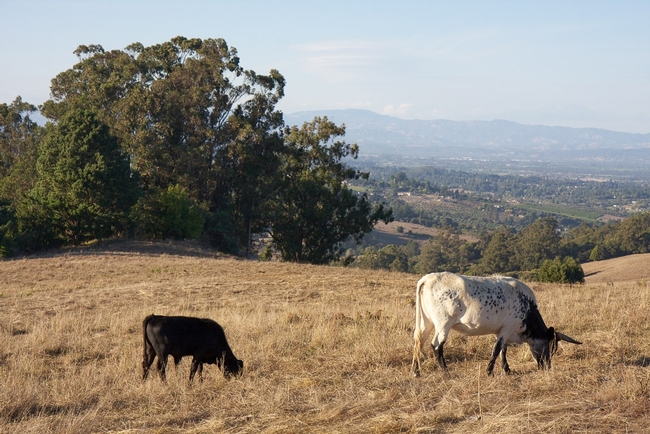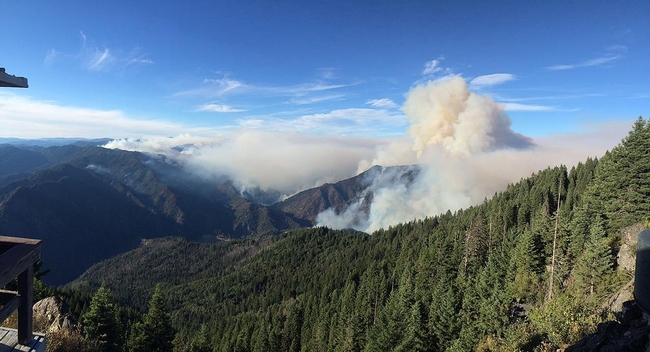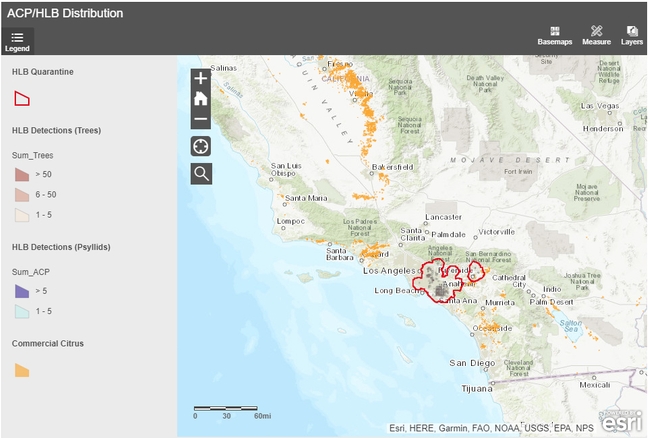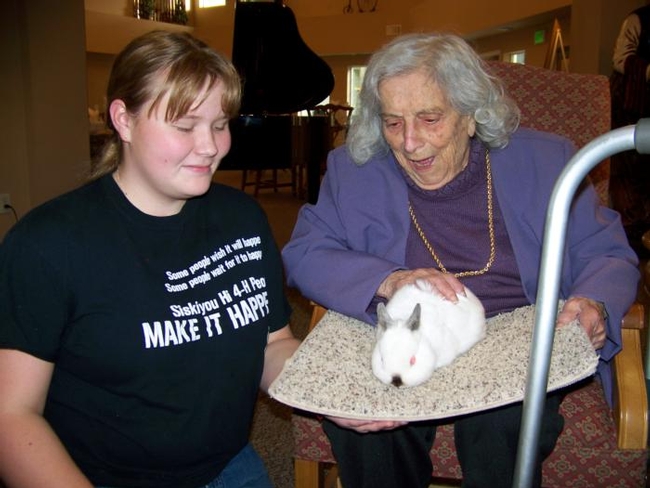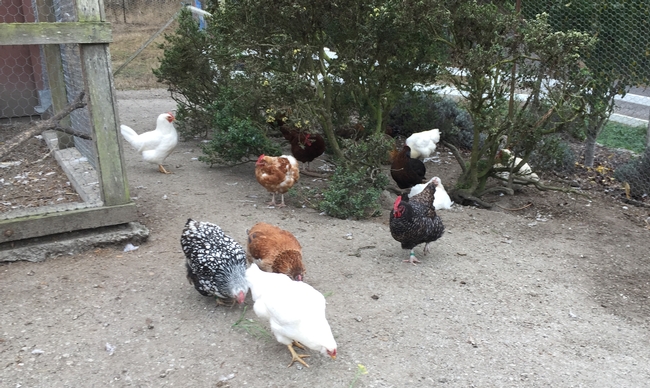ANR news blog
Cattle grazing is a tool for reducing fire danger
Cattle can help reduce wildfire danger by grazing on fine fuels in rangeland and forest landscapes, reported Sierra Dawn McClain in Capital Press. The article also appeared in the Blue Mountain Eagle, the Westerner and the East Oregonian.
The article cited the preliminary results of research by UC Cooperative Extension that show that cattle consumed approximately 12.4 billion pounds of forage across California in 2017. The researchers believe the cattle could do more.
Many grazable acres aren't grazed, said Sheila Barry, UCCE livestock and natural resources advisor in Santa Clara, San Mateo, Alameda and Contra Costa counties. According to the Capital Press article, Barry said the public doesn't always recognize the benefits of grazing; they see short grass and cow patties. Cattle's role in preventing wildfires is often overlooked.
Devii Rao, UCCE livestock and natural resources advisor for San Benito, Monterey and Santa Cruz counties and the study's lead, said ranchers should target grazing around homes, infrastructure, roadsides and at the wildland-urban interface.
“There are so many things we can do better. Cattle grazing is really important to fire safety, and it's time we have more conversations about it,” Rao said.
UCCE experts provide scientific fire information to media
The raging fires sparked during August have raised the visibility of UC fire scientists, who provide critical information to state and national media. Below are a sampling of stories and comments offered by UC Cooperative Extension experts:
Forest management needed
“When we started suppressing fires 100 years ago all the time, we actually allowed a huge buildup of fuels and debris,” said UC Cooperative Extension forest advisor Susie Kocher, who is based in the Lake Tahoe region.
She is an advocate for requiring residents to clean up the extra fuel — grasses, trees, shrubs and clutter — around their homes, making them fire ready, and for more prescribed burns.
“There's a need for more frequent, low-severity fire across the landscape, so that we wouldn't have quite so much explosion in the burning in the fields that we have currently,” Kocher said.
In August, the state and federal government agreed to clean up 1 million acres by 2025, with practices such as prescribed burns. Part of that agreement also included a commitment to create a 20-year plan by next year to prioritize areas for forest-thinning. But even this plan is sliver of what's needed to protect California from devastating future wildfires.
“I think it's a good indication they're paying attention now and that we're moving in the right direction,” said Michael Jones a UC Cooperative Extension forestry advisor in Mendocino, Lake and Sonoma counties. “My hope is that once we start with a million, then it's really easy to scale up to multiple millions.”
Capitol Public Radio, Sept. 3, 2020Taking steps to reduce fire danger
“There are things that we can and should be doing to address the fire problem and fire risk in California, and to get ahead of it, and to make ourselves more resilient,” said Lenya Quinn-Davidson, a fire advisor with the University of California Cooperative Extension and director of the Northern California Prescribed Fire Council.
Quinn-Davidson said she was encouraged when California Gov. Gavin Newsom and U.S. Forest Service officials announced an agreement this month on a joint strategy to reduce wildfire risks.
“We need more coordination and more collaboration among all of the different groups who work on these issues,” Quinn-Davidson said. “The number one thing we need is more coordinated vision around what fire is going to look like in California, how people can live with fire.”
Arizona Central, Aug. 28, 2020
What's at stake
“Every part of California is receptive to wildfire,” said Yana Valachovic, a UC Cooperative Extension forestry advisor on the North Coast. “Especially in a year like this, when we had a pretty dry winter and spring, so a lot of the state is in drought conditions.”
Sacramento Bee, Aug. 27, 2020
Fires are getting worse
"They are certainly getting worse over time," said Susan Kocher, a forestry advisor at the University of California-Cooperative Extension Central Sierra. "We burned fewer acres in wildfires in 2019 than 2018, but overall, yes, the trend is progressing to burning more and more acres at high severity over time and affecting more people through evacuations and damages to homes and communities."
Yana Valachovic, a forest advisor and county director at University of California Cooperative Extension–Humboldt and Del Norte counties, said that 100 years of fire suppression is catching up to the state as well. Valachovic said before California was settled by white pioneers around the gold rush in the 1850s, Native Americans frequently used fire as a tool —for example, to clean out an infestation of bugs in acorns.
"Fire can be really important for stimulating biodiversity and creating more food sources," Valachovic said. "After years of suppressing those fires, now we get an ignition, whether human-caused or lightning-caused or power lines down, and you have an accumulation of materials that have accumulated over various time periods, but the quantity of fuel is substantially greater than it was historically."
Salon, Aug. 25
Firefighting priorities
“At the statewide level, we do get into this mode where we start wondering where the biggest loss is going to be, what's the highest priority, and that is where the resources are going to go,” said Lenya Quinn-Davidson, a fire specialist with the UC Cooperative Extension.
Los Angeles Times, Aug. 24, 2020
Take action
Q: Beyond widely accepted reasons for wildfires growing in size, severity, and frequency, why hasn't California made more progress in slowing the trend?
Lenya Quinn-Davidson: Our fire management and our land management haven't kept pace with the scientific understanding we have of fire in California. There's this fear of active land management – prescribed burning, thinning – that sometimes gets in the way of us making good choices. If we're not protecting the resources we care about and we're not taking action, then we will continue to lose them to big fires.
Bill Stewart: Many of the fires around the greater Bay Area are in areas that didn't burn 30 years ago because they were cattle ranches. They had cattle on them, and that helped reduce fuels. Now those areas have turned into parks or 5- and 10-acre residential lots. So much development has been about what's aesthetically pleasing, so we've ended up with a landscape that, during hot and dry seasons, there's a lot more fuel and it becomes a much riskier situation.
Q: The era of megafires in California has been decades in the making. How can public agencies begin to counter that over the next few years?
Quinn-Davidson: We need to create a more robust and sustainable fire workforce. Right now, they're so beat down at the end of fire season – especially as fire season is getting longer in California – that there's basically no capacity the rest of the year to do any of the proactive stuff we need to be doing. So we need to create more jobs, and those jobs need to be dedicated to fire management and land management.
Christian Science Monitor, Aug. 24, 2020
Historical fire suppression
“We have put out fires for 100 years. Now we are paying the price,” said Scott Stephens, a professor of fire science at UC Berkeley. “It will take a while to make these forests healthy again. But it's absolutely possible.”
Stephens, the UC fire scientist, estimates that before the Gold Rush, roughly 4.5 million acres a year in California burned. By the 1950s and 1960s, that was down to about 250,000 acres a year. In recent years, it has approached 2 million acres a year.
San Jose Mercury News, Aug 23, 2020
Limited firefighting resources
At the statewide level, we do get into this mode where we start wondering where the biggest loss is going to be, what's the highest priority, and that is where the resources are going to go,” said Lenya Quinn-Davidson, a fire expert with the University of California Cooperative Extension.
Los Angeles Times, Aug. 22, 2020
Smoke impact on fresh produce
According to a 2018 preliminary UC Cooperative Extension Sonoma study, smoke from 2017 fires had little impact on local Sonoma County produce.
Based on preliminary findings, "...produce safety was not significantly affected by the fires and may be mitigated by washing produce."
The Californian, August 21, 2020
Asian citrus psyllid infected with huanglongbing disease found in Riverside citrus grove
The recent identification of an Asian citrus psyllid infected with huanglongbing disease in a Riverside commercial citrus grove isn't surprising, said UC Cooperative Extension specialist Monique Rivera in an interview with Brian German of AgNetWest.
"We've had positive trees removed here in Riverside and we're not that far from LA," Rivera said. "Eventually those two quarantine circles are likely to merge here in Southern California."
Rivera said an HLB-infected ACP hasn't been found in Riverside commercial citrus before because CDFA is mainly responsible for sampling ACP in backyard trees. "They aren't looking directly or systematically at commercial groves," she said.
There are resources available for growers to test ACPs found in their citrus orchards. Growers can request PCR testing of ACP or plant samples from an accredited lab, such as the Citrus Pest Detection Program (CPDP) which is operated by the Central California Tristeza Eradication Agency. CDFA will also collect samples for analysis at no cost to the grower.
Siskiyou County Board of Supervisors gives 4-H a vote of confidence
Not only did the Siskiyou County Board of Supervisors approve a $10,000 allocation to the local 4-H program, commissioners spoke warmly about the youth development program, reported Bill Choy in the Mt. Shasta News.
“Without 4-H I don't think my kids would have been as successful,” said commissioner Ray Haupt. He said he has seen the positive benefits of 4-H for kids and teens countless times and added that the program provides invaluable leadership skills to the youth in the community.
UC Cooperative Extension advisor Rob Wilson addressed the board to request the funding support. He said state funds have not kept up with the cost of running the program.
"We're having more difficulty covering that funding gap," Wilson said.
He added that the program is always looking for help and donations and encouraged the community to support them. For more information go to http://cesiskiyou.ucanr.edu/4-H_Program/.
Read more about the Siskiyou Pet Pals 4-H program.
UC Cooperative Extension can help meet a growing need for poultry and livestock health information
Researchers have found there is increasing demand for veterinary services for poultry and livestock in the Western United States, and a need for ongoing continuing education of veterinarians and animal owners, reported Trina Wood, communications officer in the UC Davis School of Veterinary Medicine. The article appeared in Phys.org.
UC Agriculture and Natural Resources and UC Davis researchers and colleagues at colleges in Colorado, Washington and Oregon surveyed veterinary practitioners to assess their engagement with poultry and livestock owners. They received 880 responses; few said they were actively treating such animals because of lack of facilities, interest or experience.
"This segment of agriculture has been largely overlooked by the veterinary community in North American," said Alda Pires, UC Cooperative Extension specialist in the UC Davis School of Veterinary Medicine. "Due to the potential for public health issues and the spread of zoonotic disease, veterinary professionals need increased training and better awareness of the health and welfare of these animals."
Colorado extension specialist Ragan Adams sees a role for Cooperative Extension in meeting this need.
"County Extension personnel can teach the new animal owners as they have taught youth in 4-H programs for more than 100 years," Adams said. "With enhanced knowledge about animal husbandry, the new owners will understand the importance of seeking veterinary services when their animals show signs of illness."
The researchers' study was published in the July 15 issue of the Journal of the American Veterinary Medical Association.

